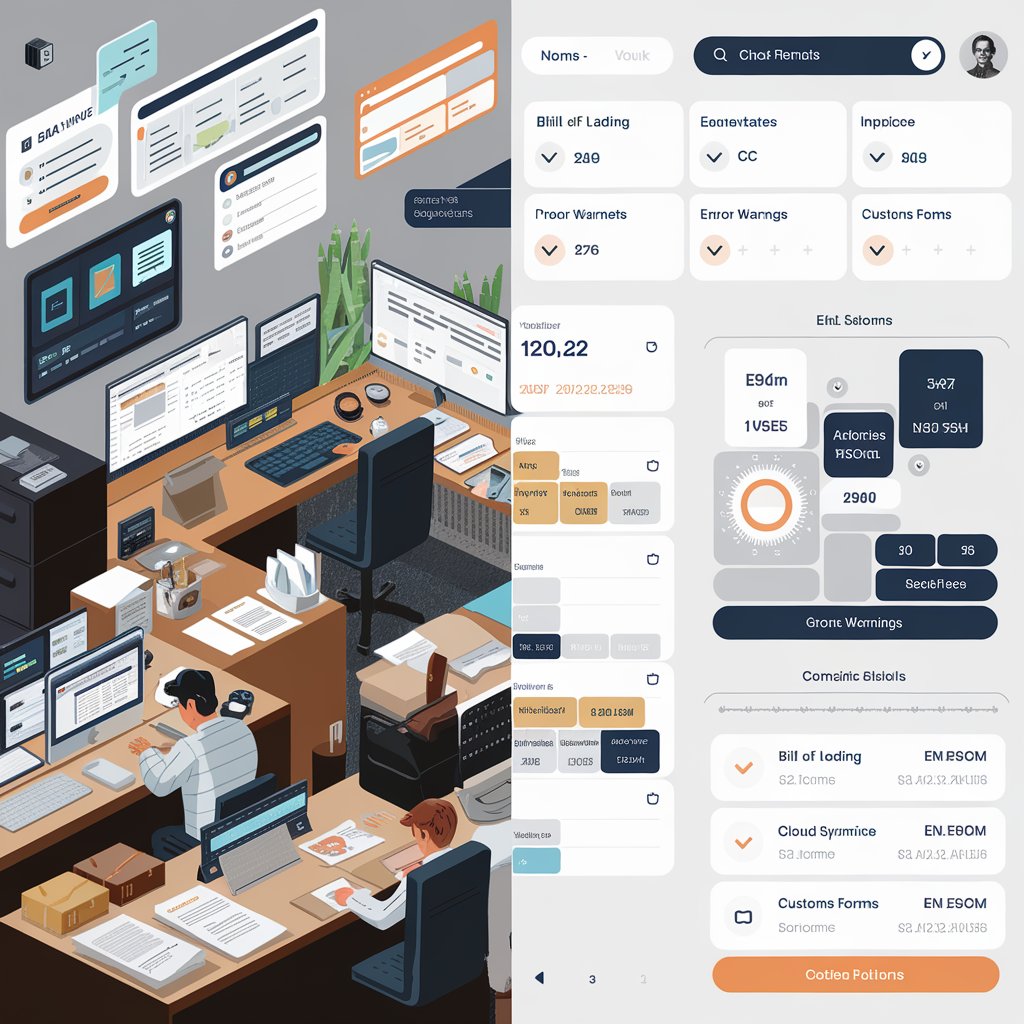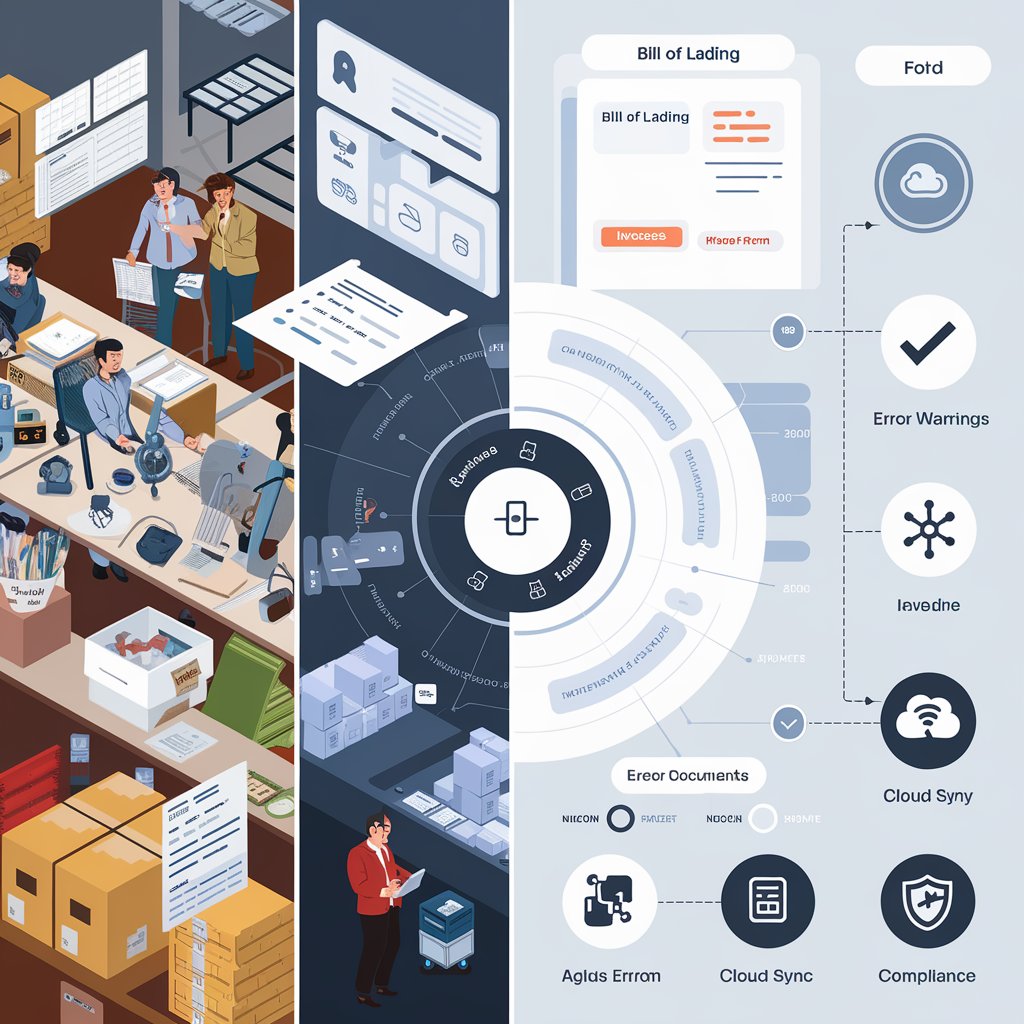Reducing Freight documentation errors: The Case for Logistics Software

⚠️ The Hidden Cost of Freight Documentation Errors
From incorrect HS codes to missing consignee details, freight documents are vulnerable to human error. These mistakes often occur in:
- Bills of Lading (BoL)
- Commercial Invoices
- Packing Lists
- Certificates of Origin
- Customs Declarations
Common errors include:
- 📝 Typos in names, addresses, or cargo descriptions
- 🚫 Incomplete or missing fields
- 🔁 Inconsistent data across systems
- 💲 Incorrect rates or tax calculations
❌ Misclassification of goods

📉 Real-World Impact: Why Errors Hurt
Even small documentation mistakes can have big consequences. According to a 2023 industry survey:
💡 1 in 3 freight delays is caused by incorrect or missing documentation.
And the fallout goes beyond delays:
Impact | Description |
Customs Holds | Cargo held until corrected paperwork is provided |
Penalties | Fines for non-compliance or incorrect data |
Rework | Time spent correcting and resending forms |
Lost Revenue | Missed delivery windows or failed client commitments |
Reputation Damage | Reduced customer trust and reliability |
🔍 Case Analysis: Manual vs Automated Documentation
Let’s compare a real-world freight forwarder scenario:
Company A – Manual Process
- Staff enters data manually into Word/PDF forms
- Repeated typos on BoLs and invoices
- Average of 6–10 corrections per week
- Average document cycle time: 48–72 hours
- Yearly compliance penalty: ~$12,000
Company B – With Logistics Software
- Uses SaaS platform to auto-fill data from shipments
- Templates ensure consistency across documents
- Integrated customs fields, HS codes, consignee data
- Average document cycle time: 12–18 hours
- Compliance-related penalties: $0 in 12 months
The shift to automation didn’t just save time — it eliminated 95% of documentation errors.

🧠 Why Logistics Software Makes the Difference
Modern logistics platforms like Linbis are designed to eliminate these friction points. Core capabilities include:
✅ Document auto-generation (BoL, invoice, packing list, etc.)
✅ Pre-validated templates that flag missing fields
✅ Real-time data sync between shipment, finance, and customs modules
✅ HS code libraries, tax logic, and compliance checks built-in
✅ Version control and audit trails for accountability
Automation ensures that what gets sent is accurate — and that what’s archived can stand up to any audit.

📊 Quantifying the Gains
Metric | Manual Process | With Software |
Avg. Errors per Week | 8 | <1 |
Document Prep Time | 2–3 hours | 20–30 minutes |
Compliance Issues | Frequent | Rare to none |
Annual Savings | – | $10K–$25K (penalties + labor) |
These numbers make a compelling case for change — especially as trade volume grows and regulatory scrutiny increases.
✅ Final Thoughts Freight documentation errors
Freight documentation errors may seem minor, but they can compound into major costs. With software built specifically for logistics operations, companies can eliminate manual touchpoints, boost compliance, and speed up delivery timelines.
Platforms like Linbis prove that automation isn’t just about convenience — it’s about protecting your operations, your bottom line, and your reputation.
📦 Ready to reduce your error rate and streamline your documentation process?
There’s never been a better time to go digital.
